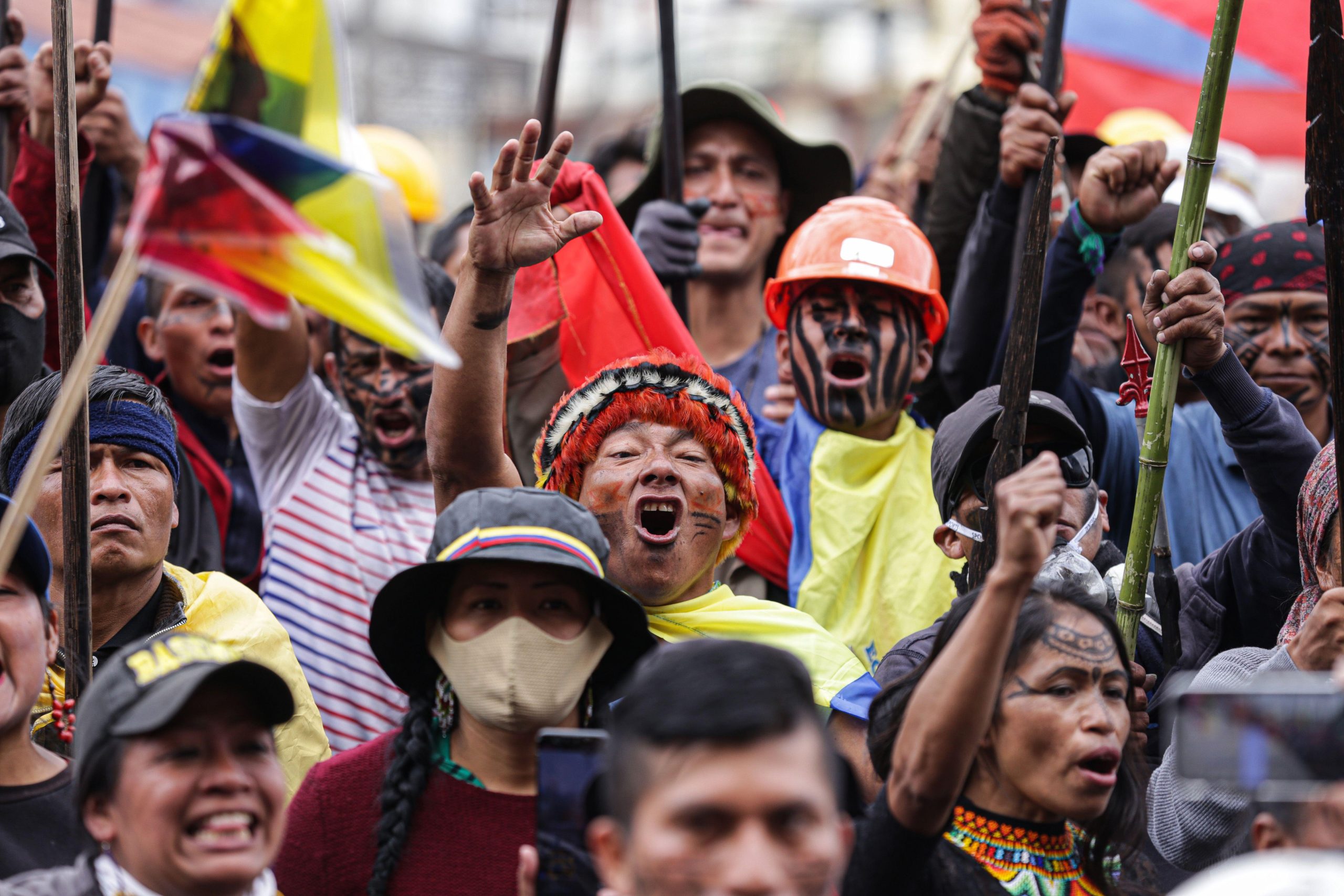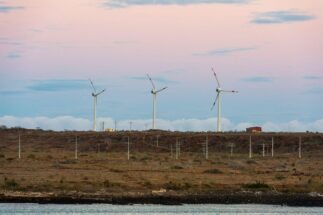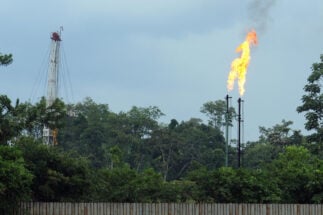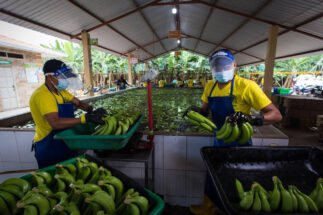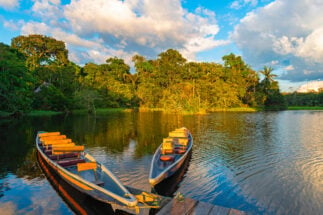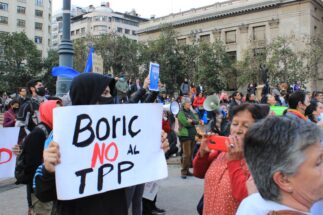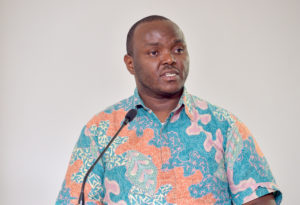An unprecedented recent decision could be a milestone in Ecuador’s history. Last month, the national government announced a one-year moratorium on new mining and oil projects, with the registers for new concessions, environmental permits and tenders for oil blocks to remain closed.
On 9 September, President Guillermo Lasso’s government and indigenous organisations signed an act to formalise the measure, which will remain in force until the drafting of a law on prior consultation with communities located in proximity to proposed projects.
This agreement came as a result of talks held after weeks of often-violent protests in June, which, among other concerns, focused on indigenous peoples’ dissatisfaction with the government’s economic and extractive policies. At least five people died during the demonstrations, more than 500 were reported injured and economic losses were estimated at US$1 billion.
With the signing of the moratorium, activities at some 15 oil blocks will be frozen pending new regulation, according to the Ministry of Energy and Mines, as well as some 200 mining projects that cannot operate due to the lack of permits, which will depend on a future law, according to estimates by the indigenous movement.
This agreement gives the Ecuadorian state the opportunity to settle a debt it has owed indigenous peoples for decades
“The moratorium should be maintained until a law is issued that regulates, in accordance with international and national human rights standards, prior consultation for the implementation of any project that could affect indigenous territories,” said Cristina Melo, legal adviser to the Fundación Pachamama. Her organisation has represented the Confederation of Indigenous Nationalities of Ecuador (CONAIE) that has led the protests and called for non-violent action.
This agreement, she added, “gives the Ecuadorian state the opportunity to settle a debt it has owed the indigenous peoples for decades.”
It comes 10 years after the Sarayaku vs Ecuador case, a landmark ruling which upheld indigenous right to free, prior and informed consent, after an oil company had encroached on ancestral lands. “The Inter-American Court of Human Rights (IACHR) had already established the obligation of the Ecuadorian state to legislate appropriately on this right,” Melo points out.
Demands and decrees
During negotiations over the moratorium, CONAIE asked the government to halt the expansion of the mining and oil frontier, for an audit of the concessions granted, and for socio-environmental reparations, among other demands. As part of these actions, they also demanded the repeal of two recently issued government decrees.
Decree 95, which came into force on 7 July 2021, was launched by President Lasso in an attempt to double oil production, which in the second quarter of that year stood at almost 500,000 barrels of crude per day. It opened up changes in public policies to improve technical and operating conditions for investors and adjustments in contract models, among other measures. It was repealed on 29 June, one day before the end of the demonstrations.
Decree 151, meanwhile, was not repealed. This order came into force on 5 August last year, and contained an action plan for the mining sector that streamlined concession procedures. Instead of its repeal, the government issued Decree 468, which orders that no new mining permits be approved in indigenous territories and protected areas – something that is already enshrined in the country’s constitution. It does, however, exempt projects that already had a prior agreement.
Indigenous scepticism in Ecuador
On 24 August, amid the negotiations, indigenous leaders demanded progress. On that day, Gilberto Talahua of the Bolivar Indigenous Movement said that he hoped that a moratorium “on all extractive activities” would be reached.
At the same meeting, environment minister Gustavo Manrique agreed with the leaders, but also said that “minerals have a role in the planet”, and that this meant analysing different options.
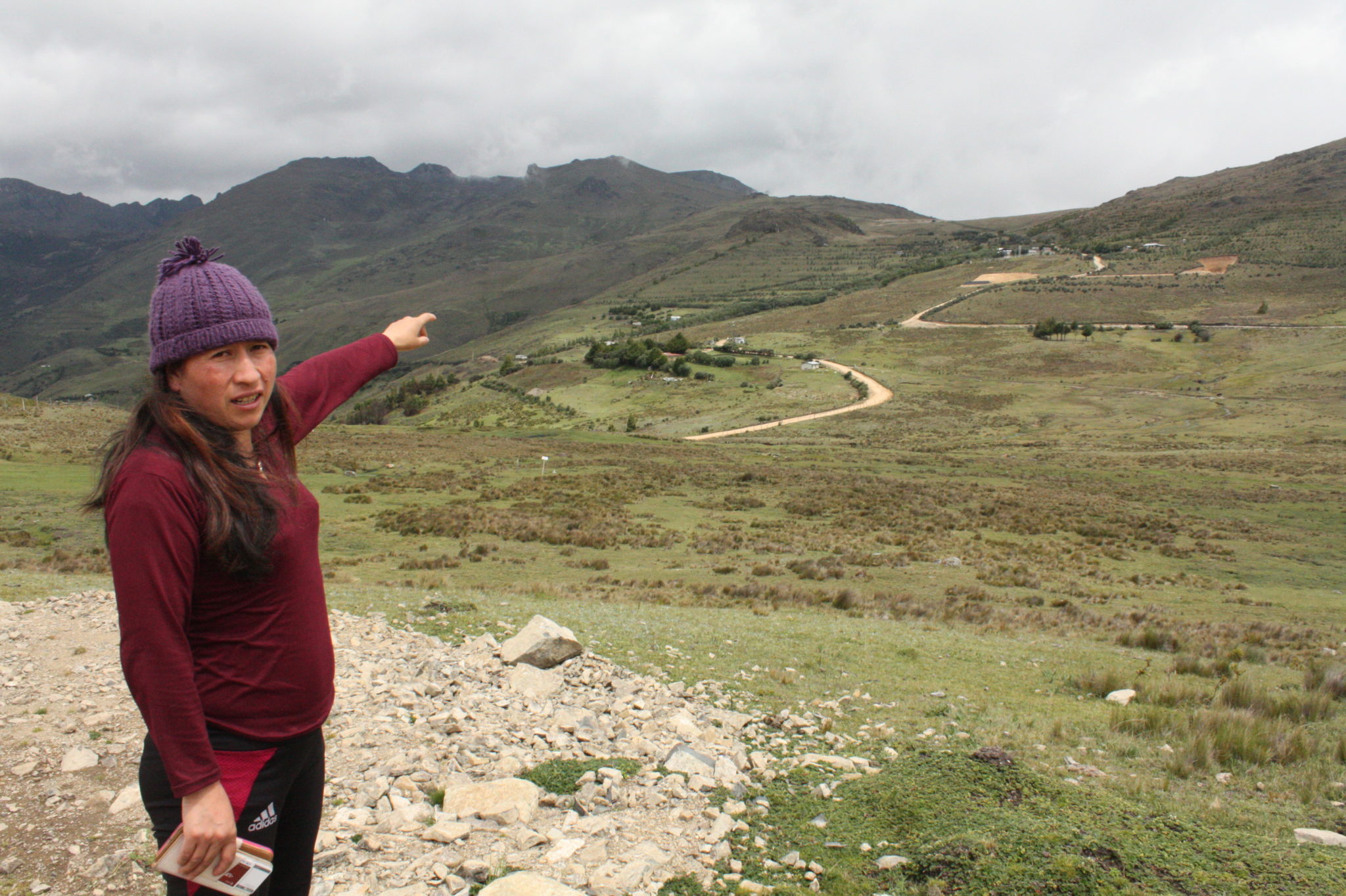
On 5 September, another roundtable was reinstated to hear counter proposals. Luis Mullo, president of the National Confederation of Indigenous and Black Peasant Organisations (FENOCIN), expressed his dissatisfaction with the government’s responses: “On the part of civil society, we are complying with peace, but [their response] worries us.” Nevertheless, the parties reached several agreements, chief among them the moratorium.
José Cueva, an agronomist and expert in mining and environmental issues who has advised the indigenous movement, told Diálogo Chino that the dissatisfaction among part of the leadership is generated by the contradictory discourse of the government.
“The government has never accepted that the moratorium should include all projects, including those that currently have permits or concessions granted,” Cueva said. “The government says that only new projects or applications are included in the moratorium.”
True to this, in statements to the media, the Minister of Energy and Mines, Xavier Vera, indicated that all projects that are underway will continue, and that several mining projects will be able to obtain an environmental license without the requirement of prior consultation. The six projects – Curipamba, La Plata, Loma Larga, Cascabel, Warintza and Mirador Norte – are mostly focused on gold, copper and silver extraction, and represent investments of more than US$10 billion.
Diálogo Chino made several approaches to the ministry for comment and further information on these projects, but at the time of press, no response had been received.
Mining presence, projects on hold
In 2018, when more than 4,200 sources of mining contamination were detected nationwide, the energy ministry launched a “purification” project to verify the situation and consolidate information on the country’s mining sector.
4,237
The number of sources of mining contamination in Ecuador recorded by a 2018 investigation by the Ministry of Environment and Water
By September 2019, it had validated more than 4,000 cases, which were matched with operations in the national registry of legal mining concessions. Some 75% of these legal concessions figured in these cases.
While artisanal and illegal mining is of concern to activists, given its indiscriminate use of mercury, there is a greater focus on open-pit mining, which has a more significant impact on the environment and the social dynamics of surrounding communities. As of last July, large-scale mining occupied an area of 104,000 hectares in Ecuador – three times the area of the capital Quito – spread over seven provinces.
Minister Vera has said that the country will not be affected economically by the year-long moratorium on mining, much less its oil production on which a large part of the state budget depends. But Katherine Navia, an expert in macroeconomics and professor at the Argos Institute in Guayaquil, sees a bleak outlook during the temporary closure.
“This brings with it losses in jobs, new technologies, knowledge, international trade openness, and all of this results in a decrease in income tax collection,” Navia told Diálogo Chino, noting that since 2008, investors have turned to starting operations in Peru and Chile.
The moratorium brings with it losses in jobs, new technologies, knowledge, international trade openness, and a decrease in income tax collection
She hopes that the fine print of the agreement will be finalised, ideally before the end of the year, so that the country will have clear legislation on the extraction of natural resources to create a climate of confidence for foreign investors.
The specialist did acknowledge the complexity of the debate, which is perhaps most profound in the oil sector, because it deals with an additional component to the expansion of the extractive frontier: the lives of uncontacted communities.
Cristina Melo, the advisor to Fundación Pachamama, hopes that with the agreement reached, the future of each of the installations that are in full operation in the Ecuadorian jungle will be re-evaluated, as communities are also feeling the impacts on local flora and fauna.

“There are no exact figures, but extractive activity has expanded in territories of the Tagaeri and Taromenane ‘untouchable’ zone [home to peoples in voluntary isolation] and there are wells in Yasuní, one of the most biodiverse areas in the world. Exploitation has even begun in the Ishpingo Norte and Tambococha blocks, in the areas of these peoples and the environmental buffer zones of Yasuní,” she said. “These are some of the projects that will have to be re-evaluated by the government.”
Oil activity involves the installation of camps, platforms and wells, as well as flares that may be lit around the clock, which all generate noise. And with the arrival of oil exploration and extraction, other problems can arise, such as deforestation, hunting of wild animals, social conflicts, and disease among uncontacted peoples, studies have highlighted.
Indigenous organisations hope that the prospective drafting of a law guaranteeing prior consultation with the communities will be the turning point they had hoped for. There is also hope that the state will make concerted efforts to change the country’s energy mix and productive industries, with a greater emphasis on clean energy and sustainable projects in natural areas – and in a way that allows communities to maintain their way of life, their customs and their health.
